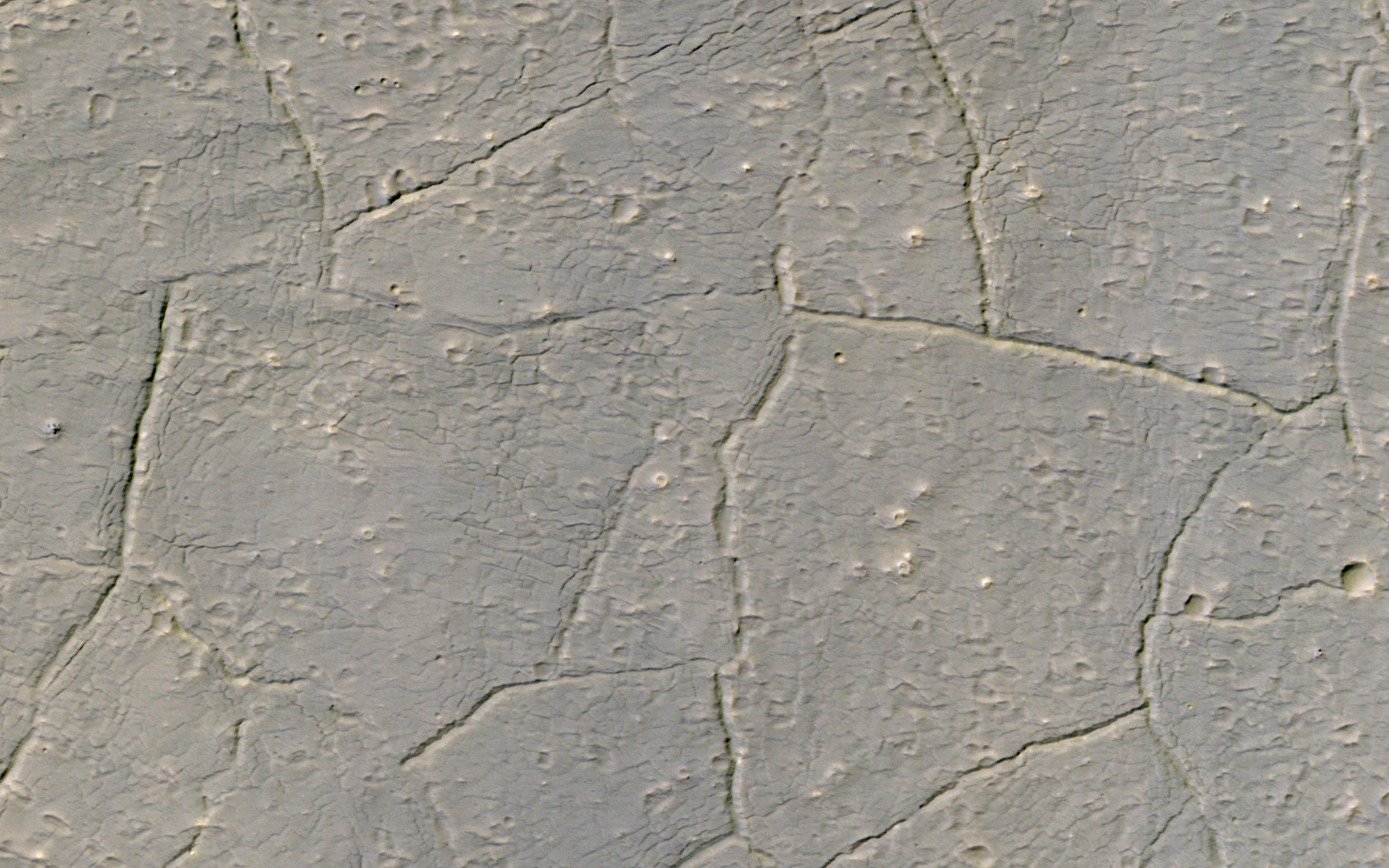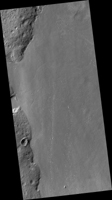
|
Strange Terrain
- Click the image above for a larger view
- Full-Res JPEG (2880 x 1800) (496.1 kB)
- Full-Res TIFF (2880 x 1800) (13.9 MB)
Caption:

Map Projected Browse Image
Click on image for larger version
This image shows material almost completely filling an impact crater to the northeast of Hale Crater, perhaps water-rich ejecta from Hale itself.
There is a pattern of fractures at two scales and many small cones. There are lots of strange terrains surrounding Hale Crater, perhaps the youngest impact crater on Mars larger than 100 kilometers in diameter. The body that hit Mars, creating Hale, may have impacted ice-rich ground.
The map is projected here at a scale of 50 centimeters (19.7 inches) per pixel. (The original image scale is 50.4 centimeters [19.8 inches] per pixel [with 2 x 2 binning]; objects on the order of 151 centimeters [58.4 inches] across are resolved.) North is up.
Background Info:
The University of Arizona, in Tucson, operates HiRISE, which was built by Ball Aerospace & Technologies Corp., in Boulder, Colorado. NASA's Jet Propulsion Laboratory, a division of Caltech in Pasadena, California, manages the Mars Reconnaissance Orbiter Project for NASA's Science Mission Directorate, Washington.
Cataloging Keywords:
| Name | Value | Additional Values |
|---|---|---|
| Target | Mars | |
| System | ||
| Target Type | Planet | |
| Mission | Mars Reconnaissance Orbiter (MRO) | |
| Instrument Host | Mars Reconnaissance Orbiter | |
| Host Type | Orbiter | |
| Instrument | High Resolution Imaging Science Experiment (HiRISE) | |
| Detector | ||
| Extra Keywords | Color, Crater, Impact, Map, Water | |
| Acquisition Date | ||
| Release Date | 2021-05-24 | |
| Date in Caption | ||
| Image Credit | NASA/JPL-Caltech/University of Arizona | |
| Source | photojournal.jpl.nasa.gov/catalog/PIA24618 | |
| Identifier | PIA24618 | |
